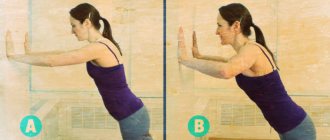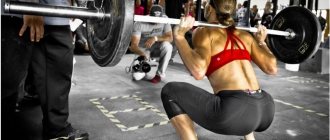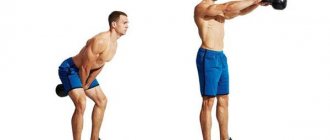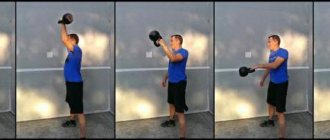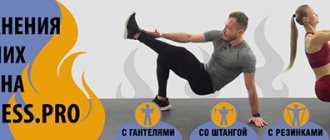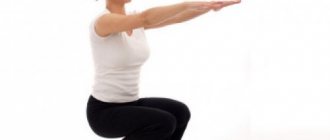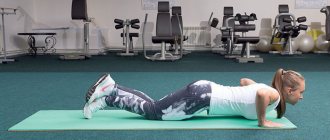≡ August 23, 2020 Category: Mind & Body
As many people know, yoga is extremely beneficial for the human body. By practicing this teaching and performing all asanas and pranayamas correctly, a person can not only achieve inner harmony, but also strengthen his body and improve his health. However, many of the poses that are included in the list of yogic exercises require certain skills and many years of training. And among them is a headstand, a pose called Shirshasana. It is worth noting that this asana has a lot of advantages and therefore those who have been practicing yoga for quite some time should undoubtedly try to master it. And then we will tell you which technique for performing shirshasana is considered correct, and how to learn step by step how to stand on your head without risking your body.
The headstand position in yoga is considered one of the most responsible and important (if you believe the ancient texts, Shirshasana was previously called the “King of Asanas”). You can achieve success in performing such an exercise if you master the basic techniques of yoga, study the features of Shirshasana and carefully monitor the correctness of the movements being reproduced.
Benefits of headstand
Shirshasana in translation means “head” and in ancient texts it is called “the king of all asanas”: the mother was considered the softer Sarvangasana, known to us as the “birch tree”. This is explained by the fact that headstand, working on all levels - physiological, emotional, energetic, helps the functioning of the organs and systems of the body so much that it can reverse the aging process and expand the spiritual horizons of the practitioner.
At the same time, the Shirshasana stance is considered one of the most difficult and traumatic asanas in yoga, requiring good physical training under the tutelage of a professional instructor, but it pays off its complexity with the benefits of a healing effect on the human body.
In answer to the question about the benefits of headstand, yoga masters highlight two aspects of the beneficial effects of exercise on the body: energetic and physiological.
At the energy level, a headstand redistributes energy flows moving up and down the body, at the point below the navel (the second chakra of a person), from where it spreads throughout the body as intensely as possible through a system of 72 thousand energy channels (nadis). It is the inverted position of the body that provides the property of the stance to “make the body immortal.”
The physiological aspects of the effect of the “reverse stance” also affect all the main organs and systems of our body.
Improved mood
Incredible, but true: one of the useful properties of the Shirsasana stance is working with a person’s mental state. In fact, there is no magic here: the stand rids our adrenal glands of excess of various harmful toxins, promoting a positive attitude. Also, due to its ability to ensure blood flow to the brain, asana helps to increase the amount of hormones such as melatonin and estrogen, which are responsible for our good mood. In the practice of yoga, there have often been cases when the stance prevented depression or completely cured it. So it's worth keeping in mind: a few minutes of standing on your head in the morning can set your day on track!
Getting rid of edema
Many people face the problem of water accumulation in tissues and swelling on the body. Regular stand-up exercises help speed up blood circulation and improve metabolism, as a result of which the “blocks” that retain water in the tissues go away, and with them the heaviness in various parts of the body, in particular the legs. This is why headstand has especially significant benefits for women.
Rejuvenation of the body
Headstand has another useful property - the ability to rejuvenate the body. Incorporating headstand into your daily habit is beneficial for its anti-aging benefits. The duration of the headstand is gradually increased to 15 minutes. Due to the fact that so-called “clean” blood arrives at the brain cells, the body starts the process of self-renewal. The result will be pleasantly surprising - everyone who has practiced headstand for a certain time began to notice an immediate effect: the face is smoothed out, wrinkles disappear, the skin becomes elastic and firm, and the hair appears thick and shiny.
Interesting! Scientists have proven that yoga can transform negative DNA programs.
Prevention of varicose veins
The problem of varicose veins is familiar to many - the blood thickens and “stops”: its normal circulation throughout the body is disrupted, and this can even lead to fatal consequences. By practicing head standing, we tone our muscles and stimulate them to work, thus improving blood circulation throughout the body. It should also be taken into account that optimal treatment should be comprehensive and include, in addition to headstand, a special diet.
Positive effect on visual acuity
By practicing Sirsasana stance, you can also improve your vision. The whole secret is in the blood: it flows with a powerful flow to the head and brain, while giving our eyes a large amount of oxygen and nutrients. However, you should remain vigilant and extremely careful: with increased eye pressure, as well as with physical damage to the eyes, headstand is contraindicated.
We recommend reading: Corn oil: beneficial properties and contraindications
Improvement of the digestive system
Practicing headstand can help improve bowel function in just a few sessions. Asana on the head has the beneficial property of stimulating the parasympathetic nervous system, thereby reducing the level of tension in the body, and this is one of the main factors for the proper functioning of the digestive system. Also, headstand has a beneficial effect on the pelvic area: blood circulation in the internal organs and intestines is significantly improved, as a result of which the body’s digestion returns to normal.
Acceleration of hair growth
Everything here is quite simple: the blood flow to the head increases several times, and this leaves the hair no choice but to grow beautiful and healthy! The benefits are especially relevant for those who have lost part of their hair due to stress, when prolonged and regular standing on their heads can help: as you know, most health problems are associated with mental imbalance.
Benefits for the cardiovascular system
Standing on your head has the beneficial property of helping with heart problems. The “reverse stance” relieves blood circulation, giving the heart the opportunity to rest and repair, while venous blood from the extremities returns more quickly to the heart.
Important! Headstand has a particular benefit in influencing the reproductive system, normalizing its processes, which is important for men in restoring potency.
Why is this position so useful?
Like any other asana in yoga, Shirshasana has many benefits for the human body. When performed regularly and without errors:
- Hormonal balance returns to normal by stimulating the work of the pituitary gland and hypothalamus. The normal functioning of these glands leads to the fact that the background is restored and the functioning of the internal systems of the body improves. This has a positive effect on both the practitioner’s physical condition and his mood. That is why yogis who regularly do this asana are constantly in a good mood.
- The heart muscle is healed and strengthened, which is due to the reversal of internal energy flows, a decrease in pressure and load on the heart. While performing a headstand, the heart muscle has the opportunity to “relax.” This, in turn, helps prevent the development of various diseases associated with increased heart function.
- Varicose veins are excluded and its progression is prevented. When performing Shirshasana regularly, the tissues of the walls of veins and blood vessels are not subject to stretching due to the reduction in the pressure of blood flowing through them. Consequently, the risk of venous dilatation and further development of the disease is eliminated.
- The functioning of the gastrointestinal tract and digestion, in particular, is normalized. Being in an “inverted” state, the human body sends blood to intestinal peristalsis and it, in turn, begins to more actively digest food. As a result, the practitioner’s work improves and stool normalizes.
- The muscle atlas of the body is strengthened. In particular, the fibers that hold the spine in the correct position become stronger and more elastic. This helps prevent various types of sprains and diseases that occur due to weakening muscles.
- The condition of the skin improves and the body rejuvenates. It's no secret that classical Hatha yoga and Iyengar promote, first of all, the desire for internal balance, as well as healing of the spiritual and physical shell. And the headstand is an excellent proof of this, because the usual flow of pranas is reversed when performing Shirshasana, which ensures a rush of blood to the upper body. Thanks to this, the skin receives more oxygen and essential nutrients, which allows the cells to rejuvenate.
- Hair condition improves. The blood streams that actively flow to the epithelium on the head are an excellent nourishment for the roots and follicles of the hair. This way they become stronger. This prevents the risk of hair loss and early graying of hair.
As you can see, the benefits of Shirshasana performed by a yogi are undeniable. Therefore, those practitioners who are still wondering why and whether they should learn to do such an exercise need to seriously think about all the beneficial effects that the upside down stance provides.
Harm of headstand and contraindications for performing it
The Shirsasana stance has its own contraindications, which are very important to pay attention to. Having been impressed by the benefits and all its advantages, you need to be aware that without preparation, performing the asana on your own is fraught with serious injuries to the body. Therefore, it is necessary to assess the capabilities of your body, taking into account the following contraindications:
- Uterine bleeding
- Headstand is strictly prohibited during menstruation, since returning to the starting position can cause the harm of heavy bleeding.
- Diseases of the cardiovascular system
- Despite all the importance of asana on the head for unloading the heart, it should absolutely not be practiced in case of serious heart pathologies.
- The headstand itself, even with a short execution time, puts a serious load on the body, which is why gradual preparation is so important to ensure the body adapts to a sharp change in its functioning conditions.
- Hypertension
- The property of Sirsasana to cause blood flow to the head does not always benefit the person performing the stand. As a result of practice, blood pressure may rise, which can lead to a stroke or hypertensive crisis. This is why the stand is contraindicated for people with skull injuries.
- Spinal deformities
- If a person suffers from problems associated with spinal deformation, then the load in the form of a headstand can lead to an increase in this pathology. This threatens to pinch the nerves or develop an intervertebral hernia.
- Also, you should not practice the stand on an empty or, conversely, full stomach, as this can harm digestion.
Is the exercise safe for all practitioners?
Alas, the answer to this question will be negative. Not everyone can practice Shirshasana and stand on their head. The fact is that, like some other yogic asanas, this position has its contraindications. They must be taken into account by those who are concerned about their health and do not want to harm the body.
- So, the first contraindication to the practice of Shirshasana is hypertension. Those who have a tendency to sudden changes in pressure or who have traumatic brain injuries are not recommended to stand upside down, so as not to provoke a hypertensive crisis and to rule out a stroke.
- Menstruation is another item on the list of contraindications that apply exclusively to the female half of humanity. During the period of menstrual flow, it is better for girls to refuse to perform the pose, so as not to encounter severe uterine hemorrhages upon returning from the inverted state.
- For pathologies of the spine and musculoskeletal system, you should also refrain from being in an upside-down position. A person who suffers from spinal deformities but still performs a headstand increases the risk of progression of the disease. To avoid the development of diseases and pinched nerve endings, they should not practice this position.
- For a person diagnosed with retinal detachment, Shirshasana is also a contraindication. This is explained by the fact that during the reversal of gravity in the body, blood flow to the organs of vision increases, which only aggravates the situation.
- Performing Shirsasana is prohibited for those people who have a history of cardiovascular diseases. Since taking the position upside down increases the risk of heartbeat interruptions, you should not provoke a worsening of the situation in patients with cardiac pathologies.
- Another important point is the level of physical fitness. In the absence of certain skills and experience, which are required by almost every yogic set of exercises, a person can harm his body and even get injured. That is why only those who have seriously decided to practice yoga and have 1.5-2 years of experience behind them are allowed to practice Shirshasana.
Preparing for a headstand
Despite all the benefits of a headstand, you need to behave with extreme caution when performing it. If performed incorrectly, without observing safety precautions, the stand can play a bad joke and lead to back and neck injuries.
To get into this difficult asana, you need to adhere to the following technique:
- >Step 1: First you need to get on all fours.
- Step 2: Clasp your hands, place your forearms on the floor, keeping your elbows under your shoulders.
- Step 3: Then you need to place the top of your head on the floor, holding your head from behind with your hands. The back of the head should be “inside” the lock from the hands. At this stage, it is recommended to take several breathing cycles to get used to the pose.
- Step 3: Curl your toes, then lift your pelvis up and straighten your legs.
- Step 4: Gradually move your legs towards your body, lowering your pelvis parallel to your shoulders. The back should be strictly straight. At this stage of preparation, you need to do three breathing cycles and check yourself for the most comfortable feeling.
Important! The main principle of hatha yoga is relaxation by removing muscle tension - the so-called muscle corsets, which ultimately benefits the normalization of the body. Therefore, it is so important to monitor the sensations of the body when performing asanas: natural relaxation should occur from releasing the clamps in the body, the pain of stretch marks should also be tolerable, “pleasant”.
Correct technique for performing a headstand
Before performing Shirshasana, it is important to adequately assess the capabilities and preparedness of your body so as not to cause harm to it. This stance is considered complex in its technique and requires the presence of well-developed muscles of the cervical region, shoulders and arms. It is also important to stretch your muscles before performing the exercise to prevent possible injuries and damage. Let us examine step by step the basic principles of the technique of performing the Shirsasana stance:
We recommend reading: Milk thistle oil: beneficial properties and contraindications, instructions for use
How long should you stand on your head?
You should never try to hold your body in a headstand for as long as possible: this will no longer be beneficial, but it can cause harm to the body. You should determine for yourself the period of time during which you can easily maintain balance and be in the asana without tension. In addition, you need to learn how to exit the stance correctly.
Standing head position
Let us remind you that you need to move on to this stage of the exercise if you have a confident and comfortable feeling in the previous steps of preparing for the stand.
You need to determine the optimal place where your head should rest. This is quite simple to do: take a book and place it on your head at an angle of 90 degrees. The point where the book and head touch will be the individual optimal place of support.
How to get out of a headstand correctly
Coming out of the stance is the most important element of the exercise, because if you make a mistake at this stage, you can get seriously injured. Some people simply “drop” their feet on the ground: this is not worth doing. You need to exit the stance just as slowly as you enter it. Be sure to smoothly lower your feet to the ground while doing breathing cycles.
Common mistakes when performing a headstand
It is important to remember one rule: you need to especially carefully monitor your sensations in the neck area, since this is the part of the body that is most easily injured. The main support should be on the head, and not on the fontanel. You also need to pay special attention to the position of your elbows and legs: if they are spaced too wide or, conversely, too narrow, it will be quite difficult to maintain balance. It is also necessary to take into account that when performing a headstand, the muscular corset takes on a large load, so it is so important to warm up the muscles before starting the exercise itself.
On the uselessness of modern yoga
In sports clubs and centers, yoga is often taught by former athletes - 30 years old or a little more.
The idea that “the more complex, the better” fits well with their psychology. This is exactly how it is in sports. The more complex the asana, the more “useful” it is (it’s not clear why). There is a competition to see who can perform a more complex asana and throw their legs over their heads more effectively.
Yoga instructors are required to obtain certificates, for which they must pass exams in which they must demonstrate these same asanas. The system reproduces itself.
And then these asanas are taught to people of completely different ages who come to yoga classes. Everyone takes the principle “the more complex the better” for granted. We're used to it. No one asks why complex asanas are needed at all, and why they are better than simple ones. It’s also good if attention is paid to safety when achieving asanas.
Other schools use hyperventilation breathing “from the shoulder and without looking back.” I personally witnessed how one yogini in a very famous yoga center in Moscow (who had just arrived from India) taught bhastrika in huge quantities during a class. Among the students was a gentleman in his 70s who had missed the previous 2 months of classes due to pneumonia. Neither the thought of the gentleman’s age (at which such exercises can cause serious problems), nor the fact that pneumonia itself was somehow possibly connected with such excessive breathing, did not occur to the instructor’s bright mind.
Even Viktor Boyko (Victor Boyko Yoga School), a proponent of more meditative practice, follows the same path. In his book, he discusses the headstand, explaining how to approach it most correctly and safely (for example, you must first strengthen your neck). All this is very true, but the question is not raised: is a headstand necessary at all?
Not long ago, on one of the forums, I read the words of a former yoga instructor from a Russian regional city. “I was the main yogi in the city; I could easily throw my legs over my head. Now my joints are no good, I’m getting treatment. It would be better if I ran after women instead of yoga.”
Recommendations for performing a headstand
For beginners to practice Shirshasana, at first it is recommended to stand on your head, pushing off the floor with your feet and making a small swing with one leg. In this case, the second leg must first be raised up. But when the arms and back themselves begin to “pull up” the entire lower body, the need to swing will disappear by itself.
And also the most convenient and safe place to practice Shirsasana is the corner of the room. You need to stand diagonally so that, if necessary, your feet have support in the form of a wall.
An important detail should be taken into account - you cannot lean on the wall, otherwise in the future you will not be able to exercise the stand without additional support. If you feel a sense of balance, you can try to get into Shirshasana without a wall at all. If you suddenly lose your balance and there is no support nearby, you need to fall on your back, grouping your body into a “somersault” pose, which will be the result.
A passive version of the Shirsasana stance is to perform it with straps or a rope. The advantage here is obvious: this technique allows you to increase the duration of execution, which, in turn, will allow you to get rid of the deepest tensions, speed up the regeneration process and restore the energy charge of the body. This option is especially beneficial for people struggling with asthma and bronchial problems.
The advantage of Shirshasana with straps is the passive form of the exercise, which provides deep relaxation and elimination of pockets of hidden tension.
The benefits of the headstand are ideal:
- for those suffering from asthma and bronchial problems;
- from neck and shoulder tension;
- to slow down the aging process.
The duration of stay in the position can be slightly increased: from 3-5 to 20 minutes, and always under the guidance of a certified yoga teacher.
Attention! It is necessary to leave the stance immediately if there is a feeling of increased pressure in the ears, eyes, or head.


